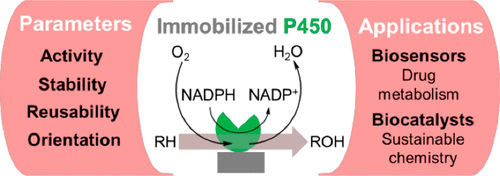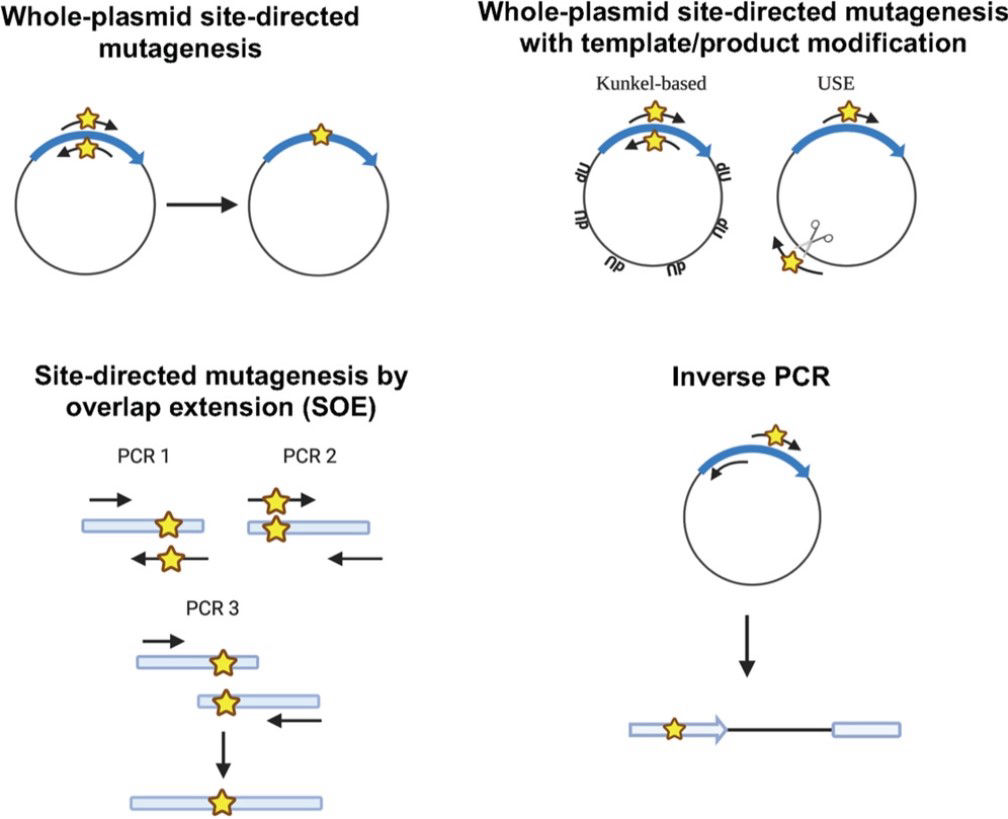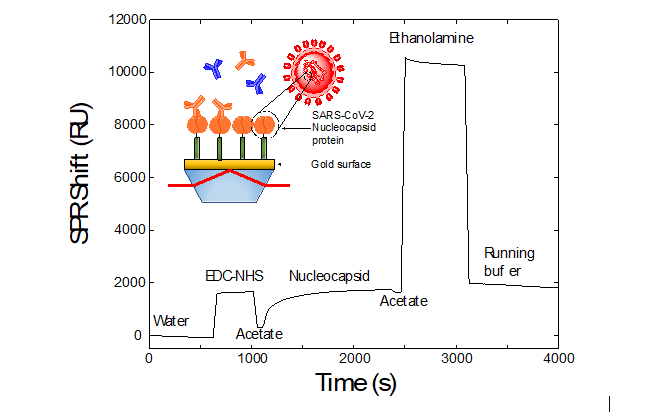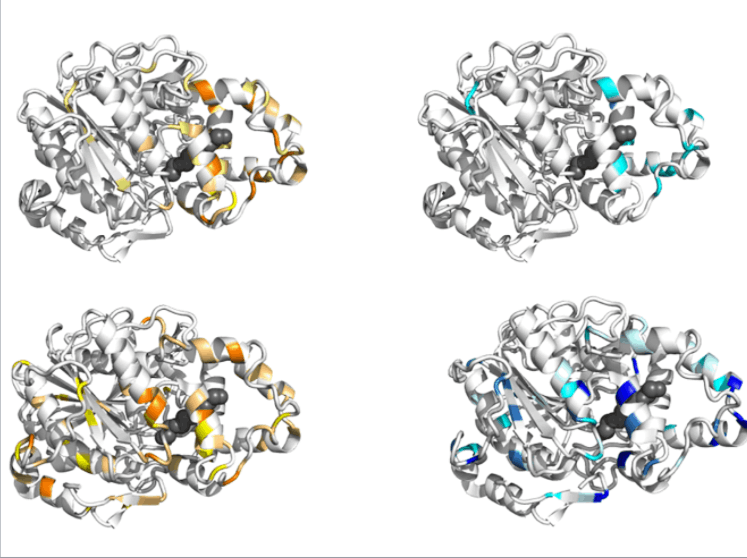
An Overview of Cytochrome P450 Immobilization Strategies for Drug Metabolism Studies, Biosensing, and Biocatalytic Applications: Challenges and Opportunities
ACS Catalysis
Valikhani, D., Bolivar, J.M., Pelletier, J.N. (2021). An Overview of Cytochrome P450 Immobilization Strategies for Drug Metabolism Studies, Biosensing, and Biocatalytic Applications: Challenges and Opportunities. ACS. Catal. 11, XXX, 9418–9434

ACS Catalysis
Cytochrome P450s (P450s or CYPs) are a large superfamily of ubiquitous heme proteins. Consistent with their natural roles in oxidative metabolism of a broad range of substrates including antibiotics and xenobiotics and in the biosynthesis of complex natural products, there are two main biotechnological applications: drug metabolism studies and biocatalytic transformations. Metabolic analyses are typically performed with the P450 enzyme immobilized on a biosensing platform. Biocatalytic reactions also increasingly make use of immobilization methods with the goal of improving operational stability of the P450s. In this Review, we briefly introduce the growing field of enzyme immobilization then focus on the advances, benefits, and challenges that apply specifically to P450s. Classical immobilization methods are presented, and recently developed materials and strategies that address the need for operational stability, the multicomponent structure of P450s, their requirement for a source of electrons, and the need to overcome limited O2 availability are discussed in the context of metabolic, biosensing, and biocatalytic applications.
Alejaldre, L., Pelletier, J.N., Quaglia , D.,(2021) Methods for enzyme library creation: Which one will you choose? A guide for novices and experts to introduce genetic diversity

A guide for novices and experts to introduce genetic diversity
Enzyme engineering allows to explore sequence diversity in search for new properties. The scientific literature is populated with methods to create enzyme libraries for engineering purposes, however, choosing a suitable method for the creation of mutant libraries can be daunting, in particular for the novices. Here, we address both novices and experts: how can one enter the arena of enzyme library design and what guidelines can advanced users apply to select strategies best suited to their purpose? Section I is dedicated to the novices and presents an overview of established and standard methods for library creation, as well as available commercial solutions. The expert will discover an up-to-date tool to freshen up their repertoire (Section I) and learn of the newest methods that are likely to become a mainstay (Section II). We focus primarily on in vitro methods, presenting the advantages of each method. Our ultimate aim is to offer a selection of methods/strategies that we believe to be most useful to the enzyme engineer, whether a first-timer or a seasoned user.
Abdelhadi Djaileb, Benjamin Charron, Maryam Hojjat Jodaylami, Vincent Thibault, Julien Coutu, Keisean Stevenson, Simon Forest, Ludovic S. Live, Denis Boudreau, Joelle N. Pelletier, Jean-Francois Masson (2020): A Rapid and Quantitative Serum Test for SARS-CoV-2 Antibodies with Portable Surface Plasmon Resonance Sensing. ChemRxiv.

ChemRxiv, Biochemical Analysis
We report a surface plasmon resonance (SPR) sensor detecting nucleocapsid antibodies specific against the novel coronavirus 2019 (SARS-CoV-2) in undiluted human serum. When exposed to SARS-CoV-2, the immune system responds by expressing antibodies at levels that can be detected and monitored to identify the patient population immunized against SARS-CoV-2 and support efforts to deploy a vaccine strategically. A SPR sensor coated with a peptide monolayer and functionalized with SARS-CoV-2 nucleocapsid recombinant protein detected anti-SARS-CoV-2 antibodies in the nanomolar range. This bioassay was performed on a portable SPR instrument in undiluted human serum and results were collected within 15 minutes of sample/sensor contact. This strategy paves the way to point-of-care and label-free rapid testing for antibodies.
Alejaldre, L., Lemay-St-Denis, C., Perez, C., Sancho Jodar, F., Guallar, V. and Pelletier, J.N. Known evolutionary paths are accessible to engineered ß-lactamases having altered protein motions at the timescale of catalytic turnover. Front. Mol. Biosci.

Frontiers in Molecular Biosciences,Structural biology
The evolution of new protein functions is dependent upon inherent biophysical features of proteins. Whereas it has been shown that changes in protein dynamics can occur in the course of directed molecular evolution trajectories and contribute to new function, it is not known whether varying protein dynamics modify the course of evolution. We investigate this question using three related ß-lactamases displaying dynamics that differ broadly at the slow timescale that corresponds to catalytic turnover yet have similar fast dynamics, thermal stability, catalytic and substrate recognition profiles. Introduction of substitutions E014K and G238S, that are known to have a synergistic effect on function in the parent ß-lactamase, showed similar increases in catalytic efficiency towards cefotaxime in the related ß-lactamases. Molecular simulations using Protein Energy Landscape Exploration reveal that this results from stabilizing the catalytically-productive conformations, demonstrating the dominance of the synergistic effect of the E014K and G238S substitutions in vitro in contexts that vary in terms of sequence and dynamics. Furthermore, three rounds of directed molecular evolution demonstrated that known cefotaximase-enhancing mutations were accessible regardless of the differences in dynamics. Interestingly, specific sequence differences between the related ß-lactamases were shown to have a higher effect in evolutionary outcomes than did differences in dynamics. Overall, these ß-lactamase models show tolerance to protein dynamics at the timescale of catalytic turnover in the evolution of a new function.
ADRESSE / ADDRESS
Université de Montréal
Département de Chimie
Campus MIL - Local B-6227
1375 Ave.Thérèse-Lavoie-Roux
Montreal, Qc, Canada, H2V 0B3
CONTACT
Phone: +1 (514) 343-2124
Fax: +1 (514) 343-7586
@ : joelle.pelletier@umontreal.ca